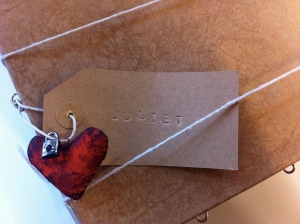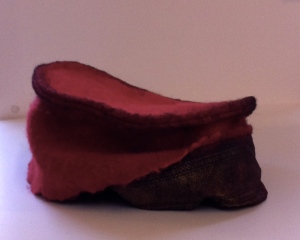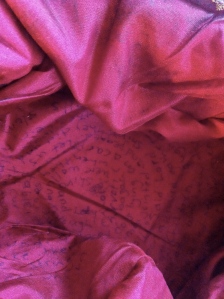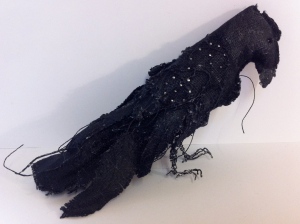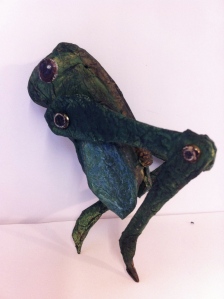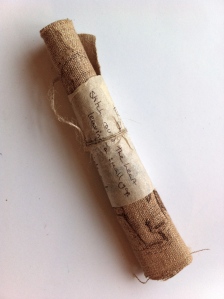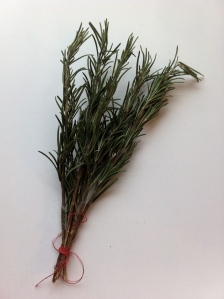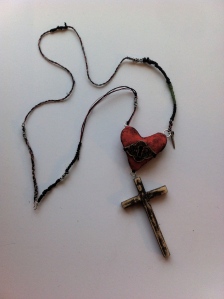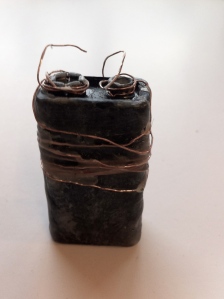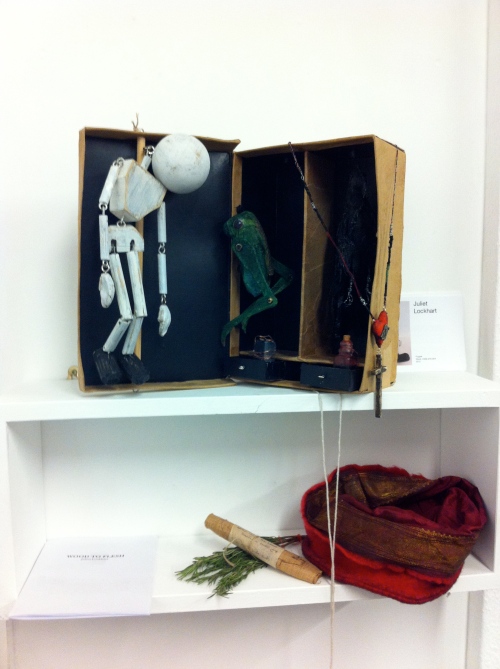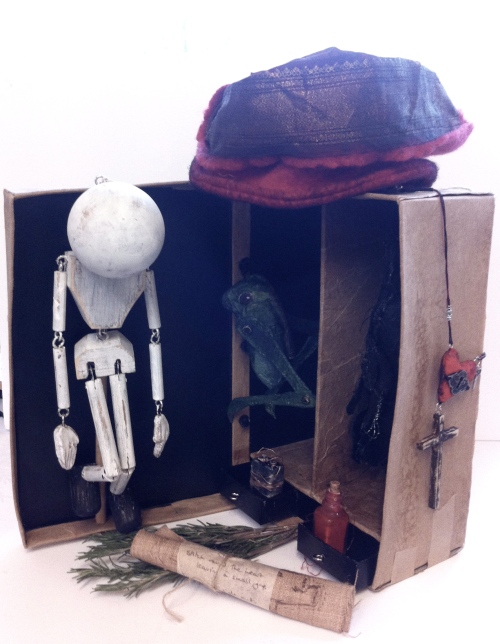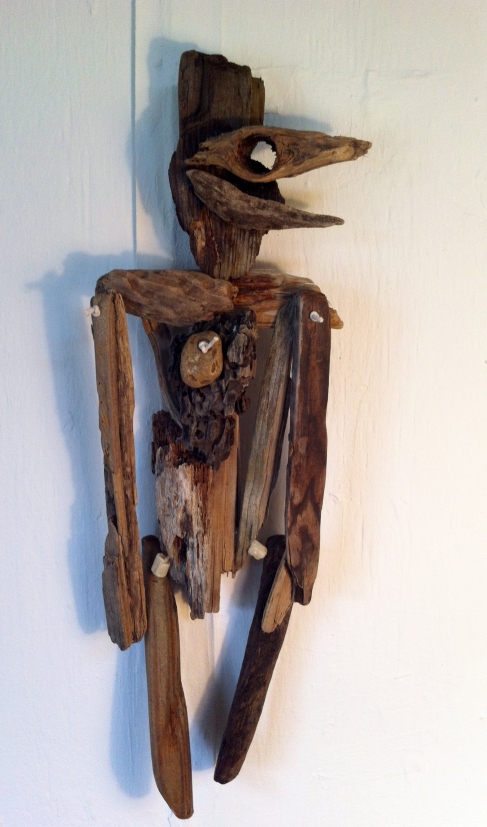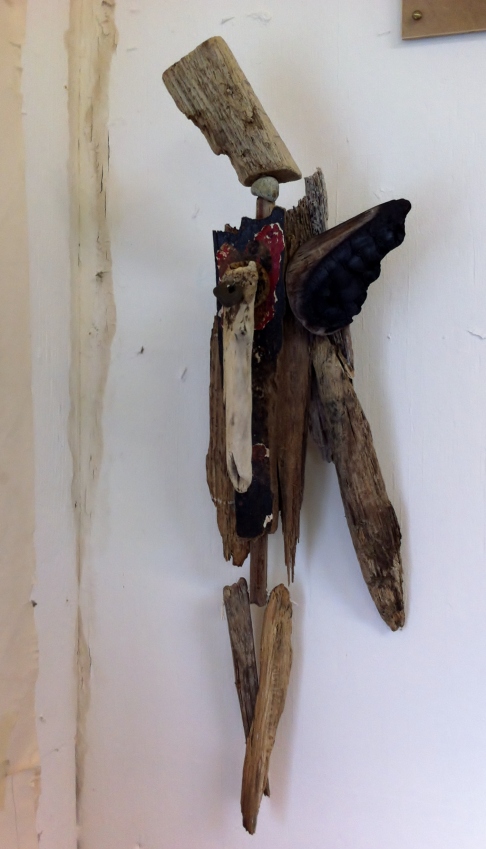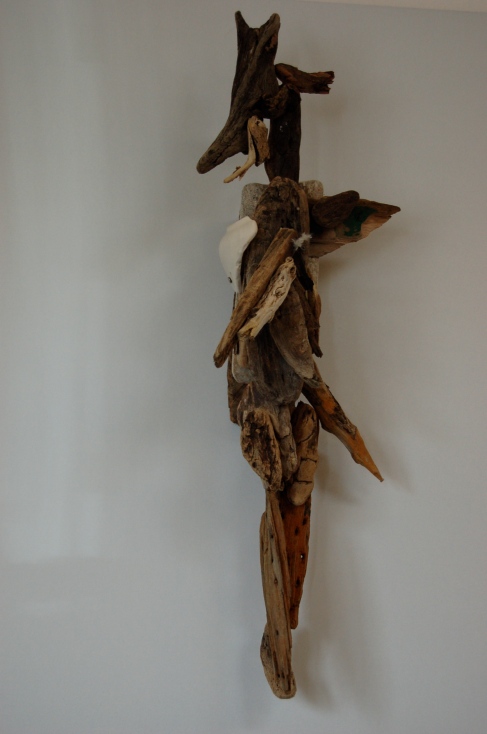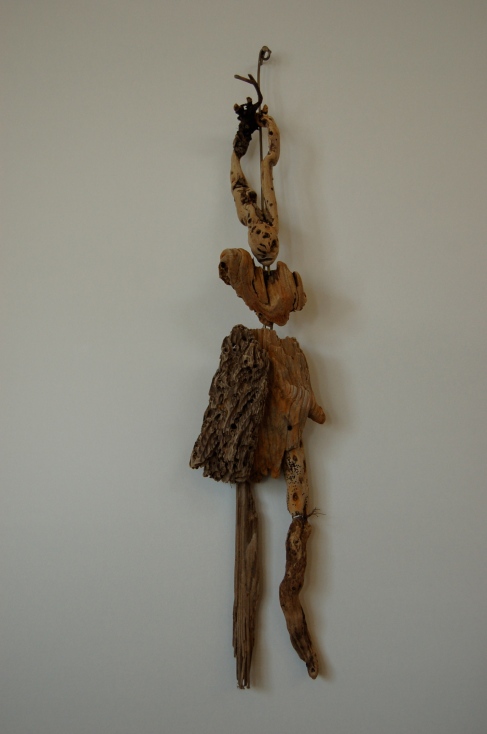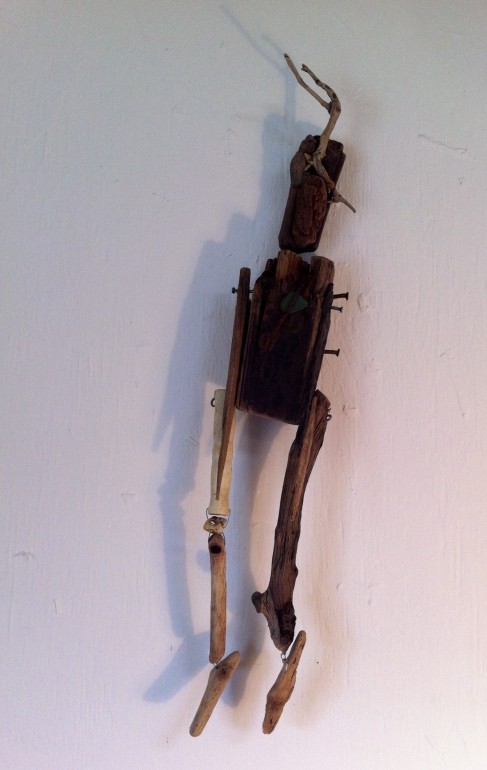Wood to Flesh
For the past nine months I’ve been working on a project with nine women artists.
We were all given a shoe box and a list of nine artefacts:
1) doll or similar toy
2) bundle of letters/cards/photos etc
3) a heart
4) needle case OR pin cushion – possibly made as a sampler
5) personal item of clothing such as a glove, baby shoe, scarf etc…
6) a game or toy piece – all that remains of a set of something such as a
farm animal, a jigsaw piece etc
7) a lucky charm/ amulet / icon
8) a rattle or baby toy that makes a noise
9) a memento of a significant event
One of these things should be a piece of jewellery
PLUS the journal – which can be either a sketch book or the story of the items
in the box.
I found it a real challenge to fit my idea within the constraints of the brief and the scale of the work. I often make life size figures, or large pieces of work so to scale it all down so that all nine objects could fit into a shoe box stretched me in many ways.
The art of bringing things to life.
Puppets are objects that always appear to be as much dead as alive; always on the brink of life or death, on the edge, the not knowing. Puppets are figures of metamorphosis, of magical potential. They stand on the cusp of what is real and what is longed for.
After a couple of false starts I returned to puppets and began to wonder how I might bring a puppet to life. I fantasied about sitting down with various artists and writers to discuss this matter. Given that this would always remain a fantasy, I took the liberty of taking ideas and thoughts from them to inspire a collection of objects that I am convinced would do the trick….
Lord Shiva and Lady Parvati were walking through the bazaar when they saw two carved dolls lying on a carpenter’s table, their wooden limbs jointed and pegged.
“Let us put our spirit into those dolls,” said Lord Shiva. They did and the dolls began to dance. Soon a crowd gathered.
“Why, they look almost alive,” an old woman gasped. Children laughed and clapped their hands. When Lord Shiva and Lady Parvati withdrew their spirits, the dolls slumped to the ground.
“Oh don’t stop,” the disappointed people cried. Lord Shiva said: “Carpenter, see if you can make them move.”
The carpenter tied pieces of string onto each of the dolls’ jointed limbs. When he lifted the strings, the dolls slowly rose, then, as he gently pulled the strings they began to dance.Lord Shiva smiled, “When you put your spirit into them, you too, can bring them to life.”
A Hindu Legend: The first Marionette
If you only had brains in your head you would be as good a man as any of them, and a better man than some of them.
Brains are the only thing worth having in this world, no matter whether one is a crow or a man.
Frank L. Baum: The Wizard of Oz: 1900
The father and son looked immediately up to the ceiling and there on a beam they saw the Talking-cricket.
“Oh, my dear little Cricket!” said Pinocchio, bowing politely to him.
“Ah! now you call me “Your dear little Cricket.” But do you remember the time when you threw the handle of a hammer at me, to drive me from your house? …”
“You are right, Cricket! Drive me away also … throw the handle of a hammer at me; but have pity on my poor papa …”
“I will have pity on both father and son, but I wished to remind you of the ill treatment I received from you, to teach you that in this world, when it is possible, we should show courtesy to everybody, if we wish it to be extended to us in the our hour of need.”
Carlo Collodi: Pinocchio: 1883
For once you have tasted flight you will walk the earth with your eyes turned skywards, for there you have been and there you will long to return.
Leonardo Da Vinci: Studies of the heart: c 1510
There’s rosemary, that’s for remembrance; pray you, love, remember.
William Shakespeare: Hamlet: c1603
I could feel the hot breath on my neck. Then the skin of my throat began to tingle as one’s flesh does when the hand that is to tickle it approaches nearer, nearer. I could feel the soft, shivering touch of the lips on the super sensitve skin of my throat, and the hard dents of two sharp teeth, just touching and pausing there. I closed my eyes in languorous ecstasy and waited, waited with beating heart.
Bram Stoker: Dracula: 1897
‘Hateful day when I received life!’ I exclaimed in agony. ‘Accursed creator! Why did you form a monster so hideous that even you turned from me in disgust? God, in pity, made man beautiful and alluring, after his own image; but my form is a filthy type of yours, more horrid even from the very resemblance. Satan had his companions, fellow-devils, to admire and encourage him; but I am solitary and abhorred.’
Mary Shelley: Frankenstein: 1818
